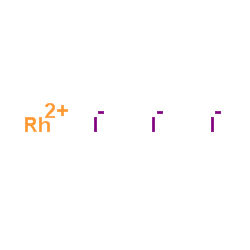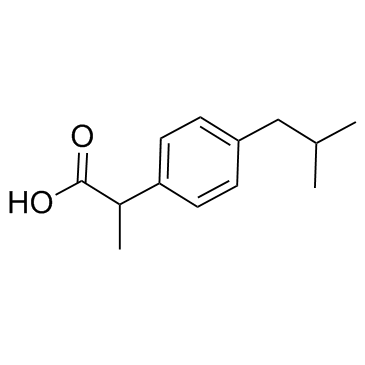碘化铑(III), Rh 18.5 - 21.3%,Rhodium(III) iodide
产品编号:西域试剂-WR364020| CAS NO:15492-38-3| MDL NO:MFCD00016311| 分子式:RhI3| 分子量:483.62
本网站销售的所有产品仅用于工业应用或者科学研究等非医疗目的,不可用于人类或动物的临床诊断或者治疗,非药用,非食用,
| 产品名称 | 碘化铑(III), Rh 18.5 - 21.3% |
|---|---|
| 英文名称 | Rhodium(III) iodide |
| CAS编号 | 15492-38-3 |
| 精确质量 | 483.619446 |
| LogP | 2.65710 |
| 外观性状 | 黑色结晶粉末 |
| 稳定性 | 常温常压下稳定 避免的物料:水分/潮湿 氧化物 酸。黑色的固体,单斜系结晶,类似于AlCl3结晶,密度为665g/cm3,在675℃时开始发生分解。 |
| 储存条件 | 常温密闭避光,通风干燥惰性气体下 |
相关文档
化学品安全说明书(MSDS)
下载MSDS质检证书(COA)
相关产品
| 安全声明 (欧洲) | S22-S24/25 |
|---|---|
| WGK德国 | 3 |
| RTECS号 | YU7300000 |
| 包装等级 | I; II; III |
| 海关编码 | 2827600000 |
|
Section 1: Product Identification Chemical Name:Rhodium (III) iodide (99.9+%-Rh) CAS Registry Number:15492-38-3 Formula:RhI3 EINECS Number:239-521-5 Chemical Family:metal halide Synonym:Rhodium triiodide
Section 2: Composition and Information on Ingredients IngredientCAS NumberPercentACGIH (TWA)OSHA (PEL) Title Compound15492-38-3100%0.01mg/m3 (as Rh0.001mg/m3 (as Rh Section 3: Hazards Identification Irritating to the respiratory tract. May be harmful if swallowed. Prolonged exposure to iodide salts may Emergency Overview: produce a mild toxic syndrome known as iodism. Primary Routes of Exposure:Contact with skin and eyes. Inhalation of dust. Eye Contact:Contact with eyes causes irritation, redness, and pain. Skin Contact:Causes irritation to skin. Symptoms include redness, itching, and pain, pimples, boils, hives and blisters. Inhalation:Causes irritation to the respiratory tract. Symptoms may include coughing and shortness of breath. Ingestion:Large oral doses may cause irritation to the gastrointestinal tract Acute Health Affects:Irritating to skin, eyes and respiratory tract. Chronic ingestion of iodides may produce iodism. Symptoms include skin rash, running nose, headache and Chronic Health Affects: irritation of mucous membranes. NTP:No IARC:No OSHA:No SECTION 4: First Aid Measures Immediately flush the eyes with copious amounts of water for at least 10-15 minutes. A victim may need Eye Exposure: assistance in keeping their eye lids open. Get immediate medical attention. Wash the affected area with water. Remove contaminated clothes if necessary. Seek medical assistance if Skin Exposure: irritation persists. Remove the victim to fresh air. Closely monitor the victim for signs of respiratory problems, such as difficulty Inhalation: in breathing, coughing, wheezing, or pain. In such cases seek immediate medical assistance. Seek medical attention immediately. Keep the victim calm. Give the victim water (only if conscious). Induce Ingestion: vomiting only if directed by medical personnel. SECTION 5: Fire Fighting Measures Flash Point:not applicable Autoignition Temperature:none Explosion Limits:none Extinguishing Medium:none required Special Fire Fighting Procedures:No special fire fighting procedures required. Hazardous Combustion andnone Decomposion Products: Unusual Fire or Explosion Hazards: No unusual fire or explosion hazards. SECTION 6: Accidental Release Measures To avoid raising dust, small spills may be mixed with diatomaceous earth, sand, vermiculite or other suitable Spill and Leak Procedures: inert material and swept up. SECTION 7: Handling and Storage Handling and Storage:Store solid in a tightly sealed container. SECTION 8: Exposure Controls and Personal Protection Eye Protection:Always wear approved safety glasses when handling a chemical substance in the laboratory. Skin Protection:Wear appropriate chemical resistant gloves and protective clothing. Ventilation:If possible, handle the material in an efficient fume hood. If in form of fine dust and ventilation is not available a respirator should be worn. The use of respirators Respirator: requires a Respirator Protection Program to be in compliance with 29 CFR 1910.134. Ventilation:If possible, handle the material in an efficient fume hood. Additional Protection:No additional protection required. SECTION 9: Physical and Chemical Properties Color and Form:black pwdr. Molecular Weight:483.62 Melting Point:no data Boiling Point:no data Vapor Pressure:no data Specific Gravity:no data Odor:none Solubility in Water:slightly soluble SECTION 10: Stability and Reactivity Stability:hygroscopic Hazardous Polymerization:no hazardous polymerization Conditions to Avoid:contact with moisture Incompatibility:halogens, hydrogen peroxide, chlorates and hypochlorites and active metals Decomposition Products:none SECTION 11: Toxicological Information RTECS Data:No information available in the RTECS files. Carcinogenic Effects:no data Mutagenic Effects:no data Tetratogenic Effects:no data SECTION 12: Ecological Information Ecological Information:No information available SECTION 13: Disposal Considerations Disposal:Dispose of according to local, state and federal regulations. SECTION 14: Transportation Shipping Name (CFR):Non-hazardous Hazard Class (CFR):NA Additional Hazard Class (CFR):NA Packaging Group (CFR):NA UN ID Number (CFR):NA Shipping Name (IATA):Non-hazardous Hazard Class (IATA):NA Additional Hazard Class (IATA):NA Packaging Group (IATA):NA UN ID Number (IATA):NA SECTION 15: Regulatory Information TSCA:Listed in the TSCA inventory SARA (Title 313):Title compound not listed Second Ingredient:none SECTION 16 - ADDITIONAL INFORMATION N/A |
| 上游产品 0 | |
|---|---|
| 下游产品 1 | |










 浙公网安备 33010802013016号
浙公网安备 33010802013016号